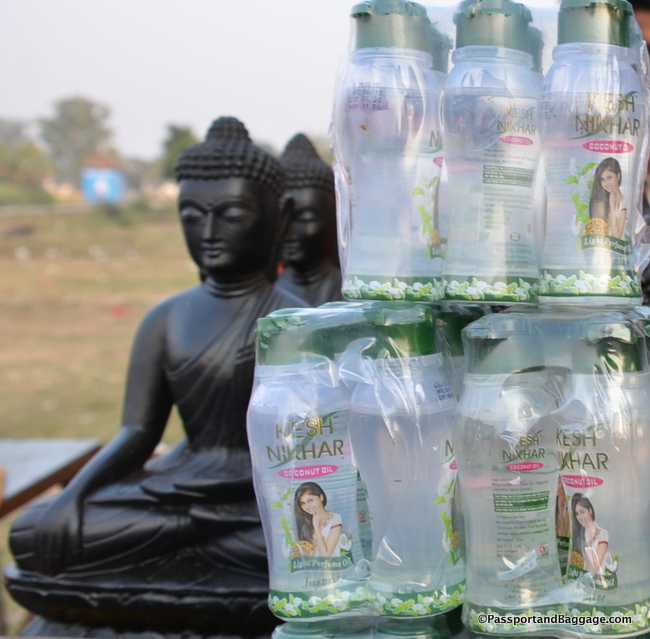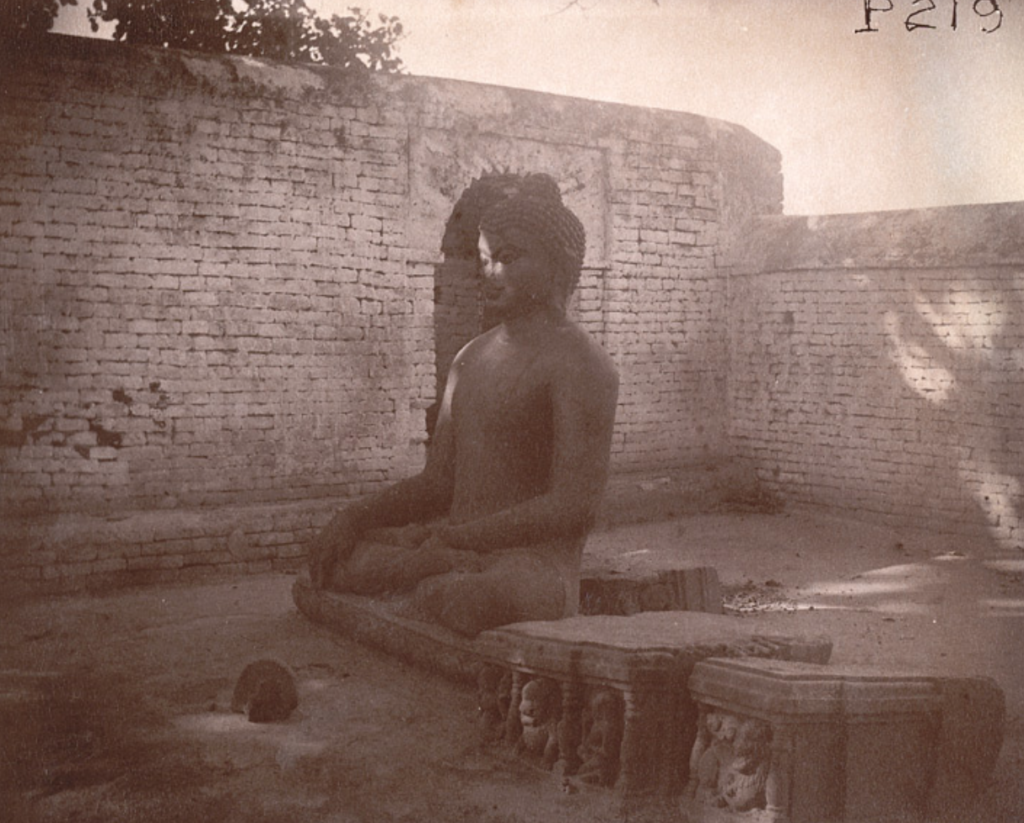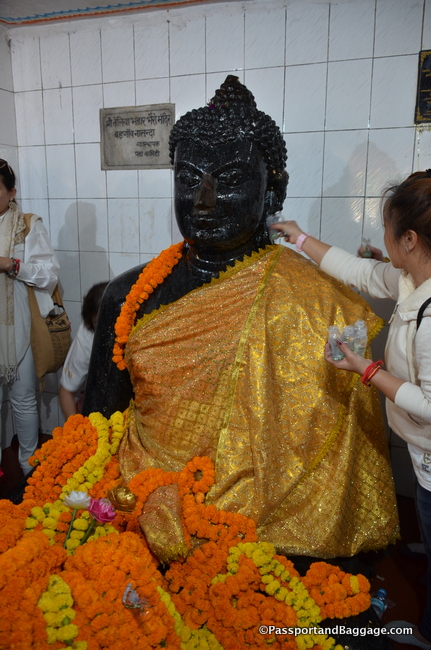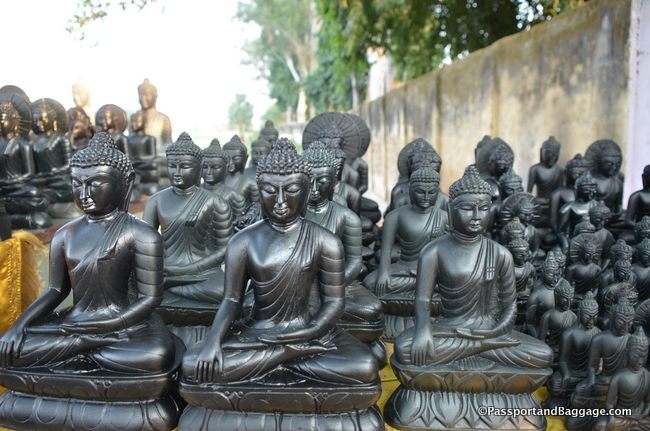Nalanda/Rajgir
November 2018
In the Black Buddha Temple is an ancient large black Buddha in the Dhamma Chakra Mudra position. The Dhamma Chakra Mudra is also called the Wheel of Law depicting Buddha’s first sermon after his enlightenment
This huge stone image from the Gupta period was lost to Buddhism, in the interim the Hindi’s worshiped it, calling it Telia Bhairav, or Telyia Baba: oil accepting deity.
The Brahmin locals, who claim its ownership as a deity, fought a bitter legal battle with the Archeological Survey of India (ASI) and finally won complete control over the site, this is why despite it being close to Temple 14 in the Nalanda complex it sits outside of the walls of Nalanda.
When discovered (date unknown) it must have already been a prominent statue and frequently visited as it was cited by several archeologists.
Alexander Cunningham’s 1861 report for the Archeological Survey of India (ASI) suggests that the Buddha image was being worshiped by the locals even then. He called it the Baithak Bhairav
Sir Alexander Cunningham ( January 1814 – November 1893) was a British army engineer with the Bengal Engineer Group who later took an interest in the history and archaeology of India. In 1861 he was appointed to the newly created position of the archaeological surveyor to the government of India, and he founded and organized what later became the Archaeological Survey of India. He wrote numerous books and monographs and made extensive collections of artifacts. Some of his collections were lost, but most of the gold and silver coins and a group of Buddhist sculptures and jewelry were bought by the British Museum in 1894.
It was also cited by A. M. Broadley as Telia Bhandar and Francis Buchanan who recorded it as Baituk Bairobh
Alexander Meyrick Broadley ( July 1847 – April 1916), also known as Broadley Pasha, was a British barrister and author. After taking the examination to enter the Indian Civil Service, Broadley went to India in 1869 where he became Assistant Magistrate and Collector of Patna. In 1872 he conducted a survey of the ruins of Nalanda and formed a collection of sculptures from the region, going on to establish a museum for the collection.
Francis Buchanan was a Scottish physician who made significant contributions as a geographer, zoologist, and botanist while living in India.
 Today the site has become popular with a group of Thai pilgrims who have implicit faith in the image. They purchase these small bottles of oil to anoint the Buddha with. They pour the oil over the Buddha and then capture some of it in an empty bottle to then cover one of the smaller “gift shop” Black Buddha statues in the oil to take home.
Today the site has become popular with a group of Thai pilgrims who have implicit faith in the image. They purchase these small bottles of oil to anoint the Buddha with. They pour the oil over the Buddha and then capture some of it in an empty bottle to then cover one of the smaller “gift shop” Black Buddha statues in the oil to take home.
I am torn about how I feel about this situation. The Black Buddha is a truly important historic piece of art, and the constant pushing of plastic bottles against its surface cannot be doing it any good. I also do not believe in putting deities such as this, that hold such importance to worshippers in museums where fees are charged.
The road to the Black Buddha is new, paid for by the government, so obviously, the incessant oiling by Thai worshippers will continue for some time.


